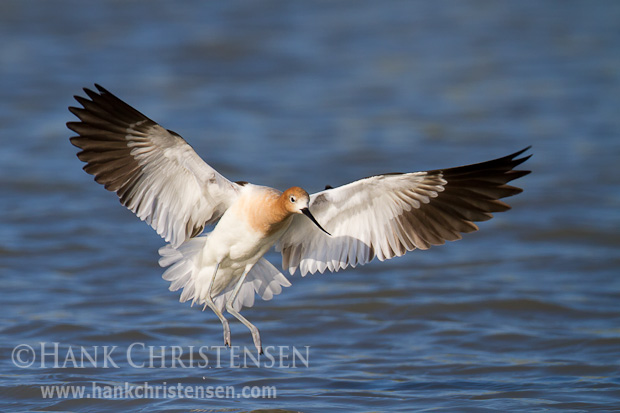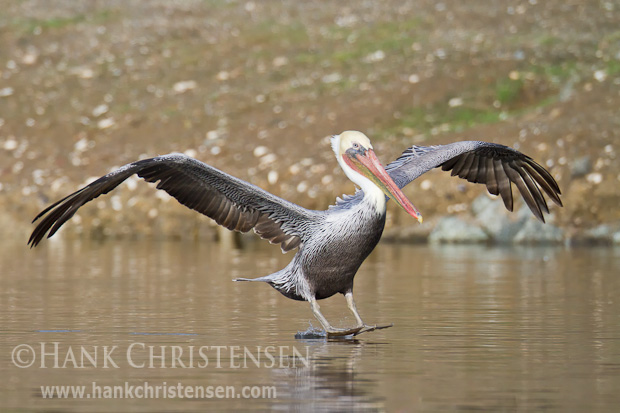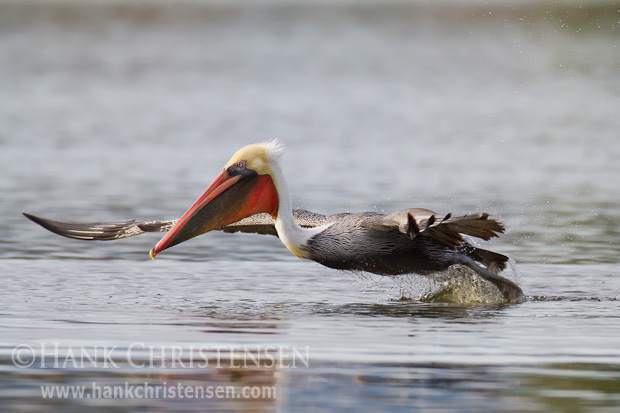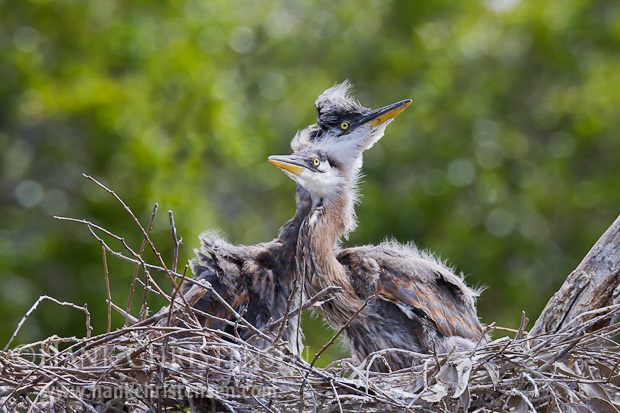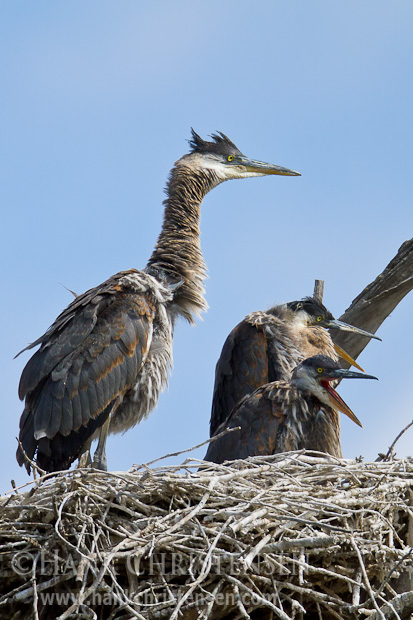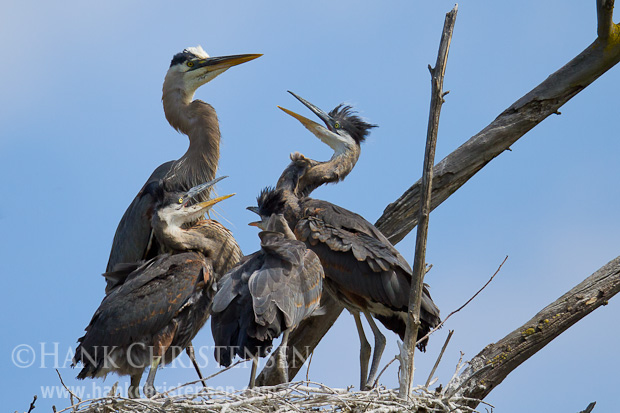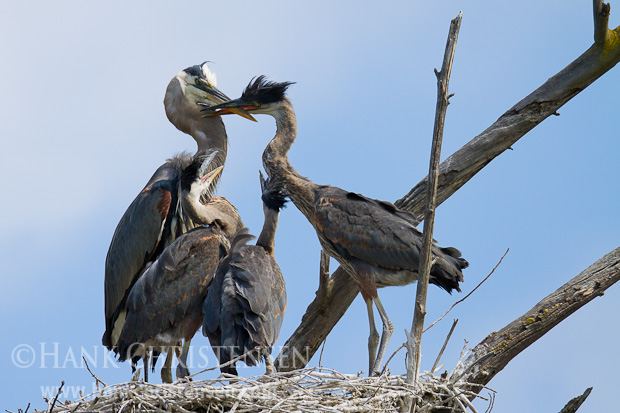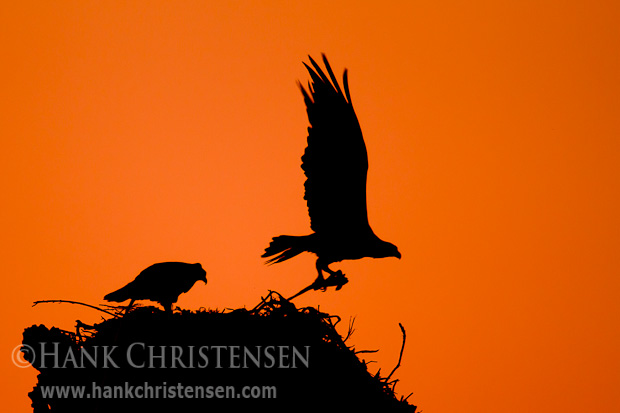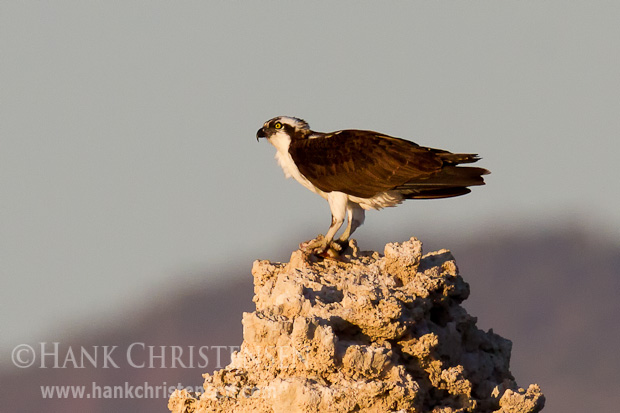
There is a large pond near my house that attracts American White Pelicans at various times of year, sometimes in large numbers. I’ve seen as many as 30 pelicans congregated along the shore, preening and snoozing. I came across this solitary pelican late last year. As it was getting close to winter, this pelican didn’t have the typical “horn” that grows from the top of the bill during breeding season.
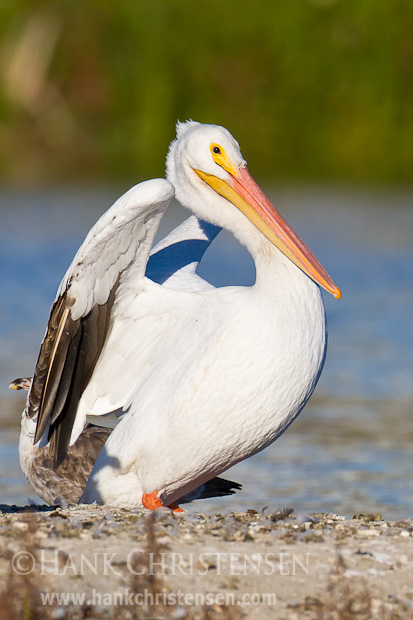
These photos were shot from the shore, with the setting sun behind me. The pelican had set up shop on a small island in the middle of the pond. One of the difficulties I encountered was separating the pelican from all the activity around it. Also on this island were many gulls (one can be seen in each photo), double-crested cormorants, black-necked stilts, and several sandpiper species. Needless to say, it was a pretty crowded place. I managed to get a few portraits that I liked, but frustratingly, some of the pelican’s best poses occurred while an ignorant interloper plodded by in the foreground. Such is nature photography. If I wanted complete control, I’d take up studio portrait photography!

